North America's largest grouse
The fascinating sage grouse, a native bird with very specific survival needs.

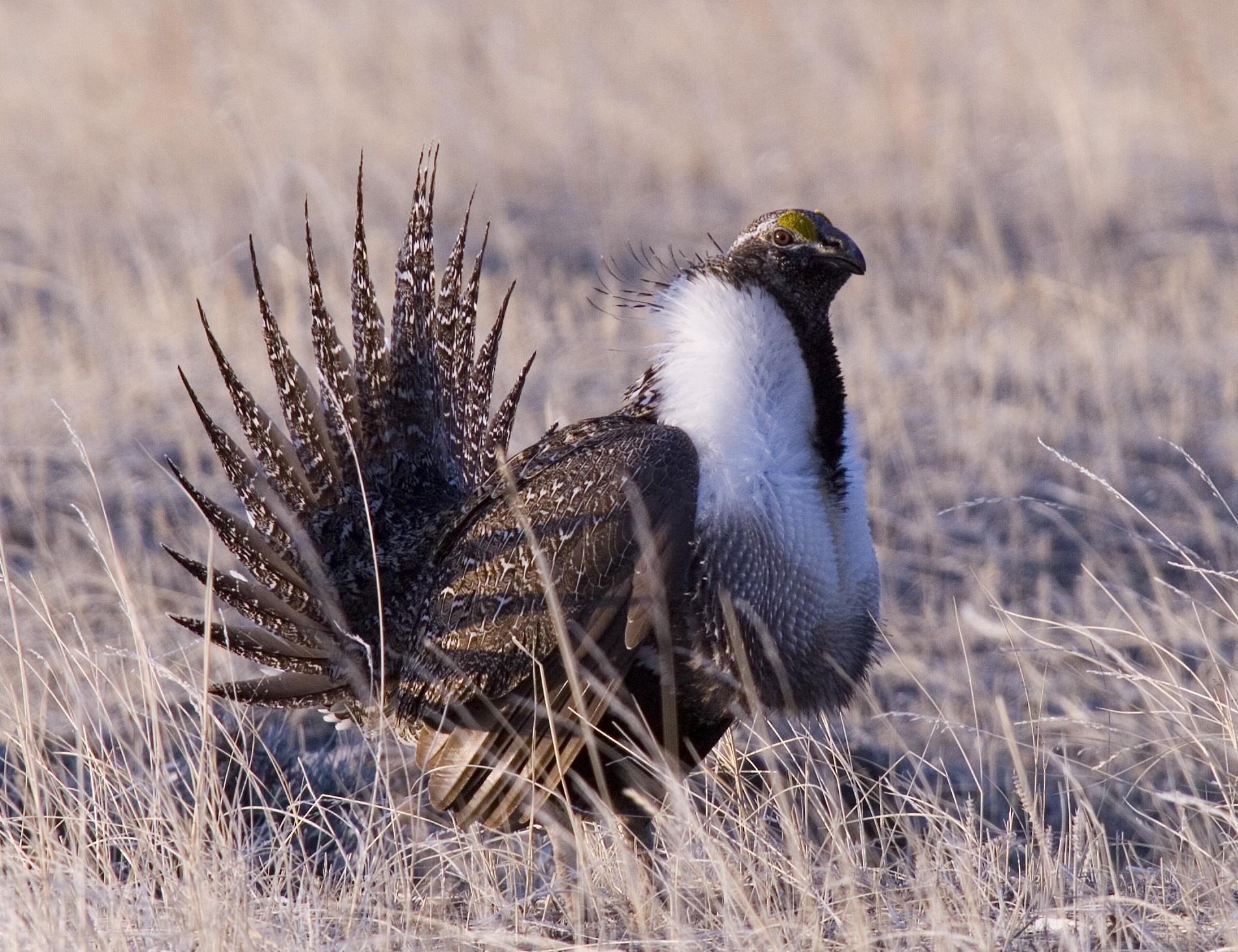
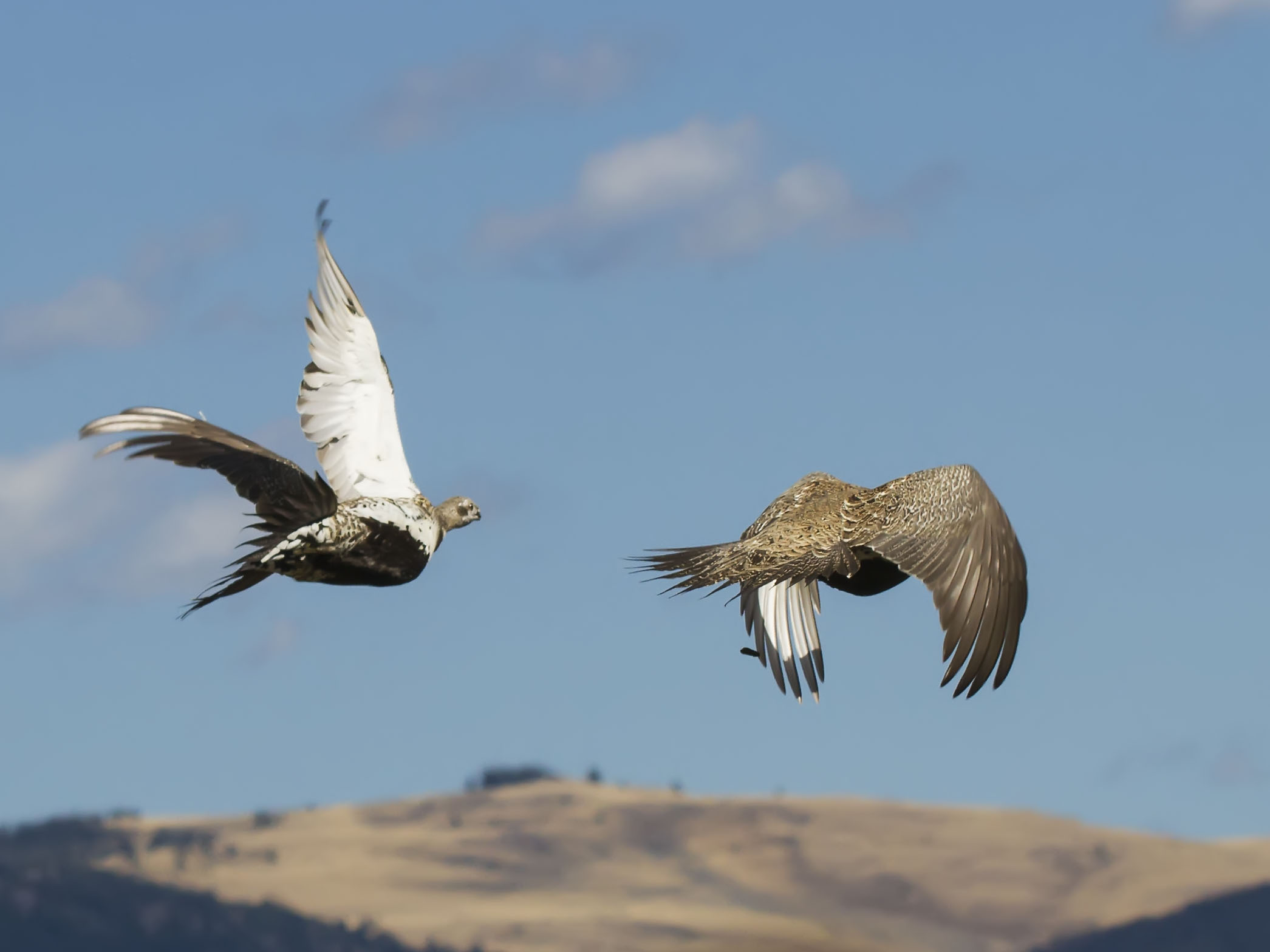
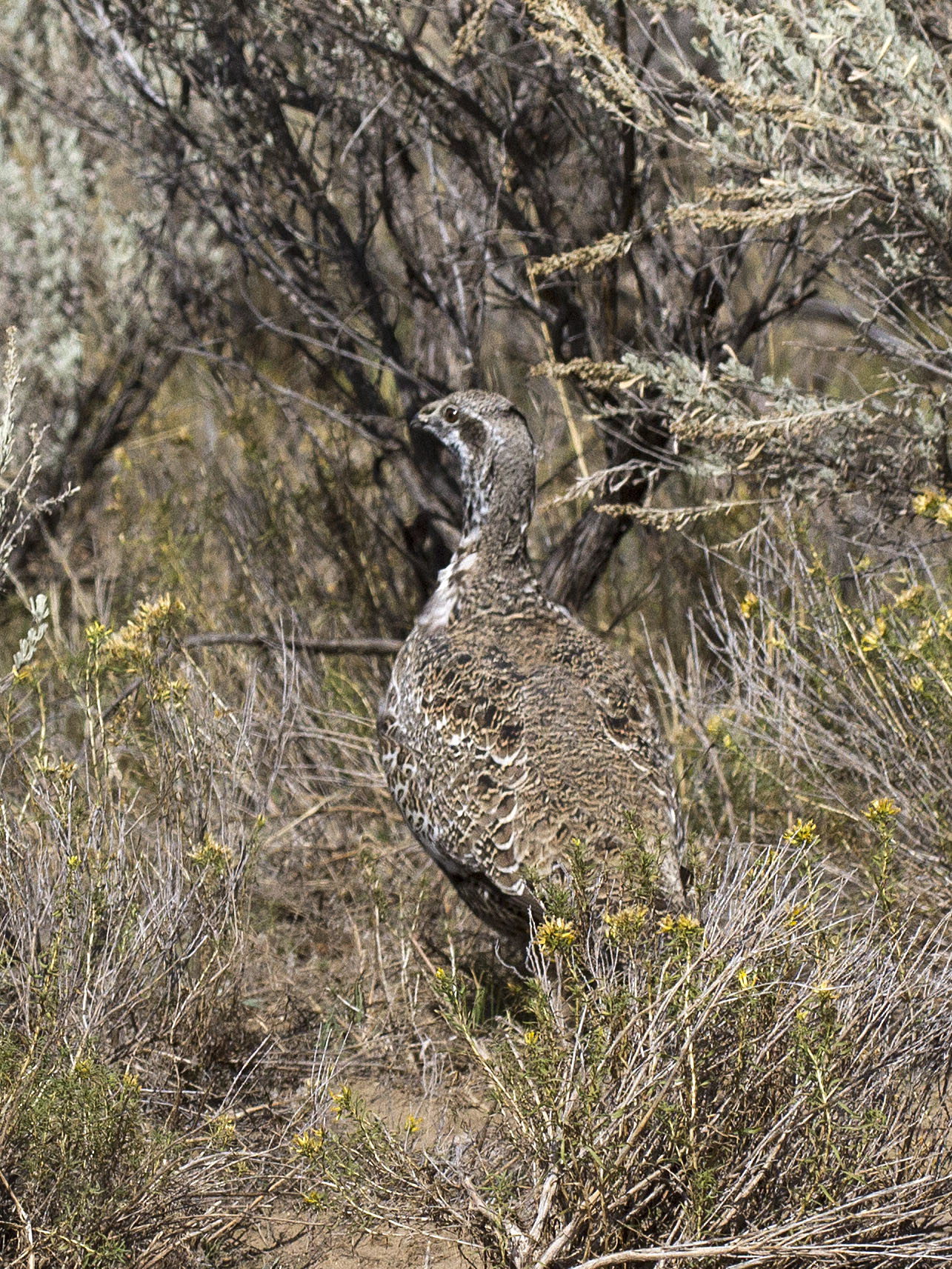
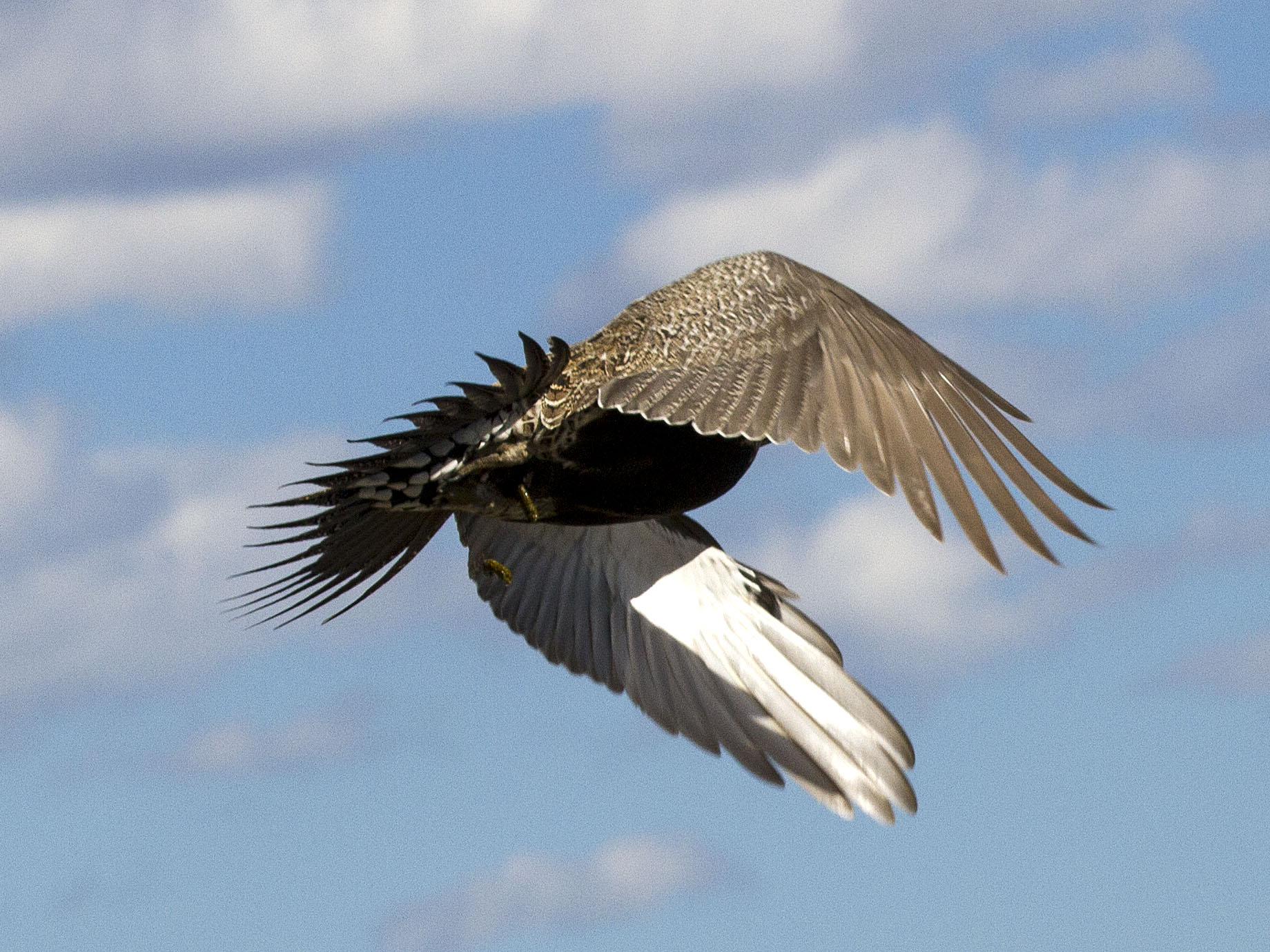
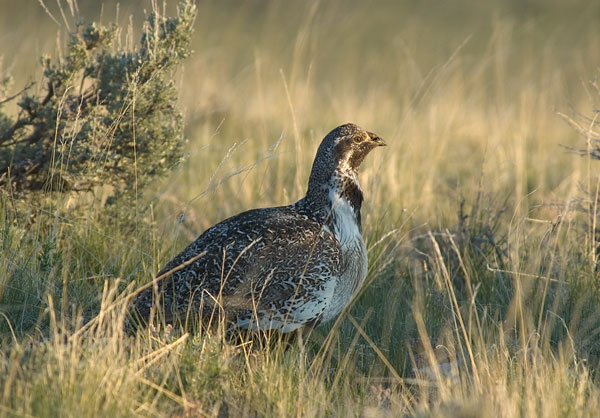
An icon of the American West, sage-grouse are found throughout Montana’s sagebrush steppe grasslands. This large grouse is well-known for its elaborate courtship displays. Each spring male grouse congregate at dawn on display grounds, called leks, and strut with tail feathers fanned and make popping noises with their bulbous air sacs. Bird watchers and photographers travel from around the world to observe this unique “dance.” In fall, when grouse are more cryptic, hunters enjoy searching the sagebrush for this unique game bird. Unfortunately, the sagebrush habitat that these grouse call home has been declining, leading to fewer grouse across the state.
Governor Steve Bullock established the Greater Sage-grouse Habitat Conservation Advisory Council by Executive Order (2-2013) on February 2, 2013. The council submitted their final recommendations to Gov. Bullock on January 29, 2014. These recommendations provided the basis for the Montana Sage-grouse Habitat Conservation Program.
The purpose of the council was to “to gather information, furnish advice, and provide to the Governor recommendations on policies and actions for a state-wide strategy to preclude the need to list the Greater Sage-grouse under the ESA, by no later than January 31, 2014.”
The council was co-chaired by FWP Director Jeff Hagener and the Governor’s Natural Resources Policy Advisor, Tim Baker. Council members included representatives from agriculture and ranching, conservation and sportsmen, energy, mining and power transmission, tribal government, local government, and the legislature.
Sage–grouse Executive Order 2–2013 establishing the Advisory Council (PDF)
Sage-grouse Advisory Council’s Final Recommendations to Governor Bullock – 2014 (PDF)
The Montana Greater Sage-grouse Habitat Conservation Program was established in September 2014 by Executive Order to provide regulatory protections for the species and establish a mechanism for voluntary habitat conservation actions. A second Executive Order was issued in September 2015 that clarified aspects of the Program and sets January 1, 2016 as the deadline for compliance by state agencies.
The Montana Department of Natural Resources and Conservation administers the Program.
Sage-grouse are managed as an upland game bird with limited hunting opportunities in Montana.
Montana, Wyoming, Oregon, Nevada, and Idaho are the strongholds for sage-grouse across their range and have been the focus of multiple, recent petitions to list the species under the federal Endangered Species Act. The primary concerns for sage-grouse are loss and fragmentation of their habitat. In Montana, ongoing conversion of native shrub-steppe to cropland agriculture and new energy development are the biggest threats to conserving sage-grouse habitat.
Montana Fish, Wildlife & Parks continues to manage sage-grouse populations, including monitoring populations, mapping priority habitats, and regulating hunting seasons through the Fish and Wildlife Commission process. FWP provides technical and financial assistance to private landowners interested in enhancing rangelands for cattle and sage-grouse, and offers rangeland protection options such as conservation easements and leases. Copies of FWP's tri-fold brochure, "Landowner Assistance Programs for Conservation of Greater Sage-grouse in Montana," are available online or from FWP's Coordinator:
Montana Fish, Wildlife & Parks
1 Airport Road
Glasgow, MT 59230
(406) 808-7113
FWP worked with conservation and science partners to develop the Management Plan and Conservation Strategy for Sage-grouse in Montana – Final in 2005. The plan describes the desired conditions for sage-grouse habitat, and identifies risks confronting habitat and sage-grouse populations based on the best available information at the time. Emerging science, especially related to energy development, was used in conjunction with the Management Plan in the development of the Montana Sage-grouse Habitat Conservation Program in 2014. While the new program establishes a regulatory framework for activities in sage-grouse habitat, the management plan remains the most comprehensive document on sage-grouse population dynamics and habitat requirements in Montana.
It is the result of more than two years of research and deliberation by the Montana Sage-grouse Work Group, which included a wide and diverse spectrum of Montanans.
It responds to concerns about the loss of sagebrush habitat and declines in sage-grouse numbers in the state.
It includes conservation objectives for both sagebrush habitat and sage-grouse populations.
It provides guidelines and tools for assessing different habitats to obtain standardized results, which will be useful in protecting, improving, and restoring habitat.
It provides a framework for establishing local groups of diverse stakeholders to adapt the plan to their respective geographical areas.
To provide for the long-term conservation and enhancement of sagebrush steppe/mixed grass prairie complex within Montana in a manner that supports sage-grouse and a healthy diversity and abundance of wildlife species and human resources.
Montana Greater Sage-grouse population estimates and associated uncertainty, and the number of known breeding sites (called leks) are reported annually in compliance with MCA 87-1-201(1)(11), as amended in 2017.
The fascinating sage grouse, a native bird with very specific survival needs.
